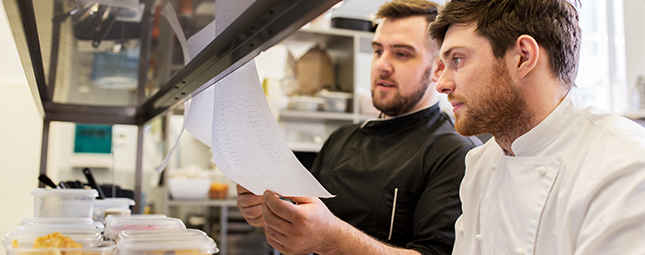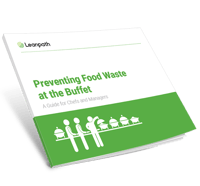Chefs Roundtable, Part 1 - Inventory strategies to prevent food waste

During a lively webinar hosted by Leanpath Executive Chef Robb White, Sodexo chefs from the healthcare, corporate dining and universities segments shared their best practices in reducing food waste through inventory and menu management and staff engagement. Today, we’ll review the discussion on inventory management.
The panel focused most of their discussion on production sheets: “Production sheets are table stakes for high volume kitchens that want to run efficiently,” explained Chef Robb. “But even the best production sheets don’t engineer out all food waste.”
Production sheets tell chefs how much to prepare of any given menu item on any given day, often factoring in weather conditions or other things that might impact dining levels.
West Coast Area Executive Chef Ken Krenzler explained how he uses food waste tracking data to refine his production sheets.
“Our food waste tracking data shows us where our production sheets are off or where people aren’t following the production sheets. It’s a big loop: you follow the production system, after service you see how much you wasted, and you feed that information back into your production sheet. The next time that menu item comes around again, you go through the same process.”
Through that process, the sheets become more and more refined and you are able to identify human error in production that leads to overproduction.
Human error can lead to problems, but equipment issues can also be an issue. Leanpath data showed Executive Chef Brandon Williams that a unit at his university was consistently overproducing scrambled eggs despite what the production sheets called for.
“The eggs were being cooked in a big tilt skillet,” he said. “Well, the skillet was malfunctioning, so it would take forever to cook the eggs. To make sure they had enough they cooked a lot.”
Food waste tracking data also showed Chef Brandon that the bulk of his waste was occurring in the last hour of service. “We saw that the staff weren’t scaling down production as we got closer to the end of service. Especially at the salad bar, you don’t need to put full pans out when it’s 30 minutes until close.”
Sodexo Executive Chef Laurance Morrison ran through a few other inventory management best practices to cut food waste, such as: having a “to use” cart in the walk-in with items that are close to expiration; making sure all food is stored, labeled and dated properly so it is always clear what items should be pulled; and always making sure to do a physical check of deliveries before accepting them. “It’s very easy to accept a delivery and just sign for it without checking… because you get so busy.”
Key takeaways from the inventory management discussion:
- Have production sheets in place.
- Use food waste tracking data to find where errors are occurring or where sheets can be refined.
- Maintain control of the flow of food throughout its entire kitchen cycle: from receiving to storage, prep, pull, cooking and repurposing.
Download these guides and get started
on your food waste prevention journey today!
 |
 |
 |
| 20 Waste Cutting Tips Every Foodservice Chef Should Know | Preventing Food Waste at the Buffet: A Guide for Chefs & Managers | Empowering & Engaging Culinary Teams to Prevent Food Waste |